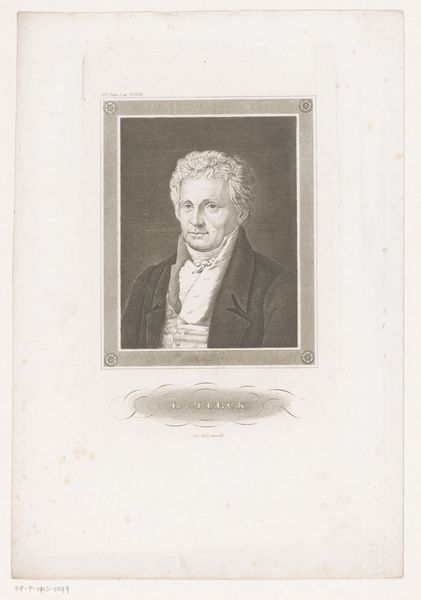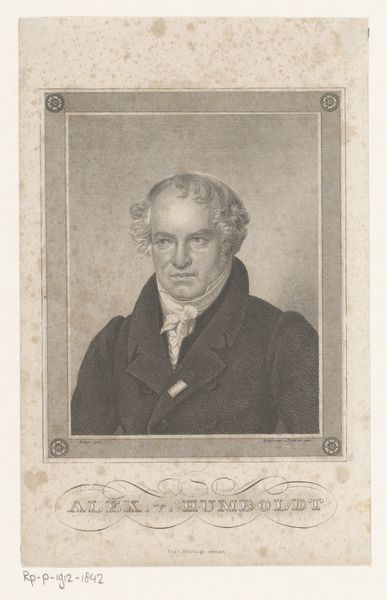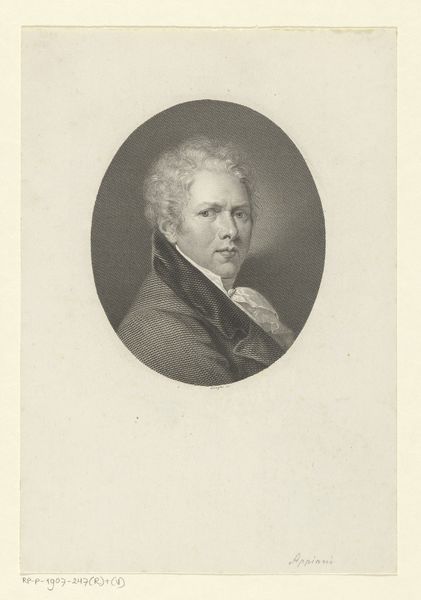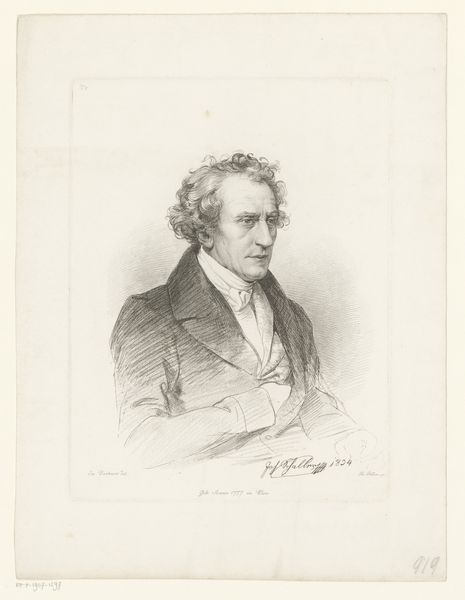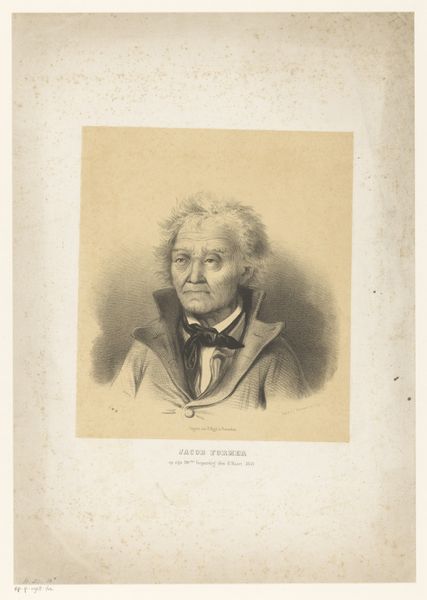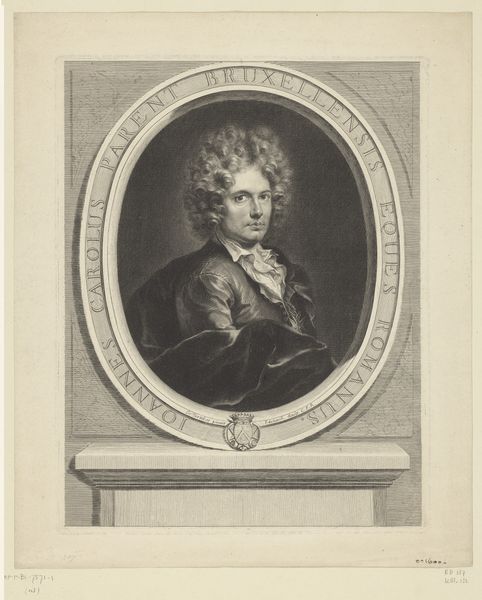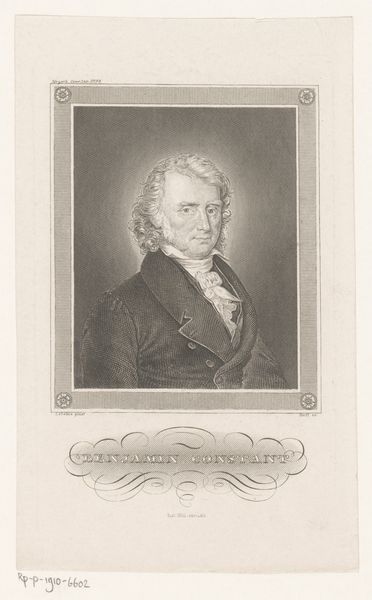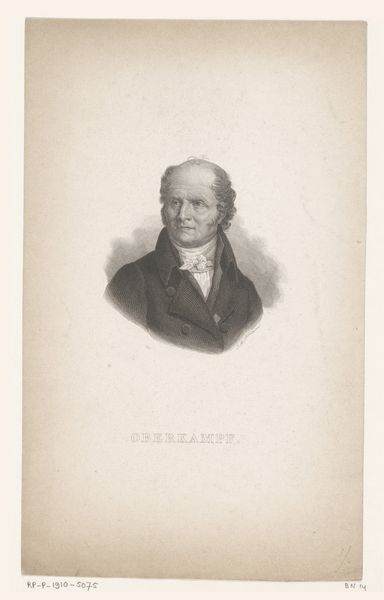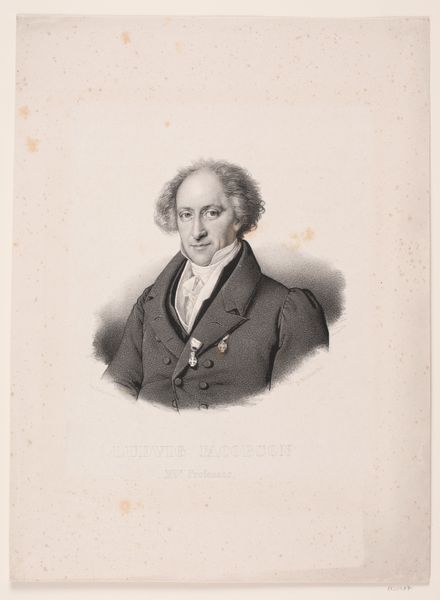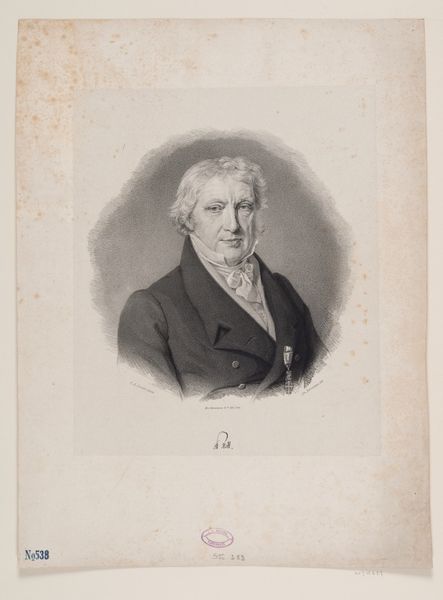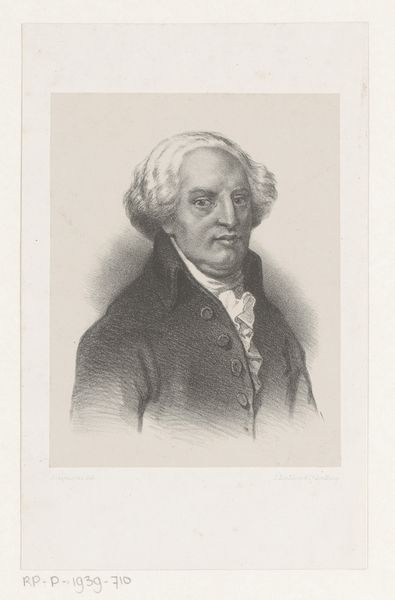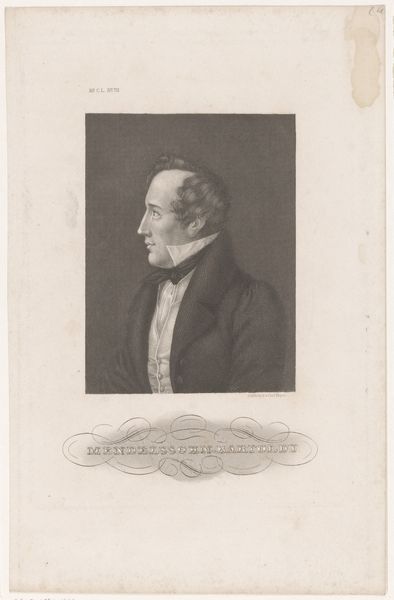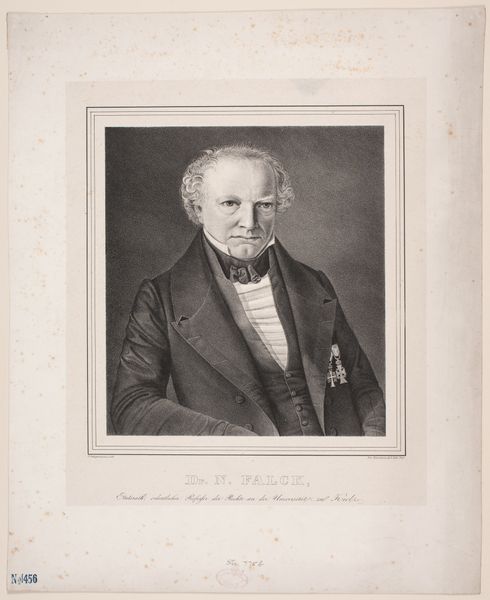
print, engraving
portrait
neoclacissism
classical-realism
historical photography
portrait reference
academic-art
engraving
Dimensions: height 136 mm, width 101 mm
Copyright: Rijks Museum: Open Domain
Curator: Allow me to introduce "Portret van Aloys Schreiber," an engraving realized sometime between 1816 and 1882 by Edouard Schuler. What’s your first reaction to it? Editor: There’s a severity, a real formality about the piece. You can feel the weight of tradition. I find myself wondering about the engraver's hand, how they translated the textures and likeness onto the metal. Curator: It's fascinating how you're drawn to the material process. It definitely resonates with the neoclassical movement, a desire to present reality through a rational lens, which served political narratives too, particularly regarding depictions of gender and class in nineteenth century Europe. How does Aloys fit into that? Editor: Given that it's an engraving, there's a certain reproducibility, implying this image had a function, perhaps spreading Schreiber's reputation or cementing his status. It points to questions of accessibility and circulation of images during this era. Were prints the Facebook of the early 1800s? Curator: That's a thought provoking comparison. Aloys Schreiber himself, considering his elevated status as a prominent historical and literary figure, undoubtedly moved in specific cultural circles. The print format would have influenced not just who saw the portrait but how they were invited to perceive him and the sociopolitical structures he moved in. Editor: What strikes me further is the detail they were able to achieve. What kind of tools did the artist employ? There's clear precision and that tells us of refined labor and meticulous craftsmanship. Curator: The choice of medium reveals as much about 19th century Europe, in that academic artists saw engraving as the pinnacle of reproductive printmaking. They regarded that to be essential to communicating artistic ideals to a wider, cultivated audience, shaping perception, while elevating artistic expression into an industry, really. Editor: Absolutely. I now appreciate that it is more than just a static image; the engraving becomes a cultural object. It holds so much social information, reflecting power structures, labour and technological capacities. Thanks for expanding on this. Curator: Thank you for sharing how the medium itself shapes the way we understand broader historical currents.
Comments
No comments
Be the first to comment and join the conversation on the ultimate creative platform.
